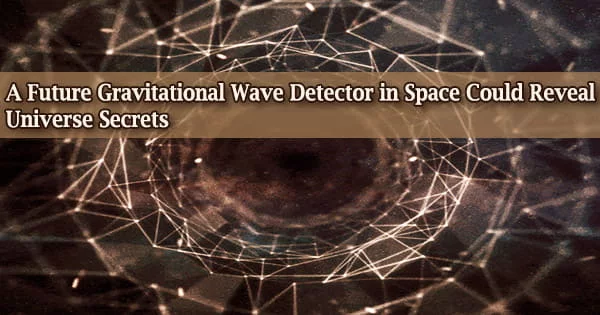According to new research, future space-based gravitational wave detections will be capable of discovering new fundamental forces and maybe throw new light on previously unsolved parts of the Universe.
Professor Thomas Sotiriou from the University of Nottingham’s Centre of Gravity and Andrea Maselli, researcher at GSSI and INFN associate, together with researchers from SISSA, and La Sapienza of Rome, showed the unprecedented accuracy with which gravitational wave observations by the space interferometer LISA (Laser Interferometer Space Antenna), will be able to detect new fundamental fields. The research has been published in Nature Astronomy.
According to the findings of this new study, LISA, the space-based gravitational-wave (GW) detector set to be launched by ESA in 2037, would open up new avenues for cosmic investigation.
Professor Thomas Sotiriou, Director of the Nottingham Centre of Gravity explains:
“New fundamental fields, and in particular scalars, have been suggested in a variety of scenarios: as explanations for dark matter, as the cause for the accelerated expansion of the Universe, or as low-energy manifestations of a consistent and complete description of gravity and elementary particles. We have now shown that LISA will offer unprecedented capabilities in detecting scalar fields and this offers exciting opportunities for testing these scenarios.”
So far, no evidence of such fields has been found in observations of astrophysical objects with weak gravitational fields and tiny spacetime curvature. There is reason to believe that at large curvatures, deviations from General Relativity, or interactions between gravity and new fields, will be more apparent.
New fundamental fields, and in particular scalars, have been suggested in a variety of scenarios: as explanations for dark matter, as the cause for the accelerated expansion of the Universe, or as low-energy manifestations of a consistent and complete description of gravity and elementary particles. We have now shown that LISA will offer unprecedented capabilities in detecting scalar fields and this offers exciting opportunities for testing these scenarios.
Thomas Sotiriou
As a result, the discovery of GWs, which opened a new window into the strong-field domain of gravity, represents a once-in-a-lifetime chance to detect these fields.
Extreme Mass Ratio Inspirals (EMRI), in which a stellar-mass compact object, such as a black hole or a neutron star, inspirals into a black hole with a mass million of times that of the Sun, are one of LISA’s target sources, and they provide a golden arena for probing the strong-field regime of gravity.
Before plunging into the supermassive black hole, the smaller body completes tens of thousands of orbital cycles, resulting in lengthy signals that can detect even the tiniest deviations from Einstein’s theory and the Standard Model of Particle Physics.
For the first time, the researchers created a new approach for modeling the signal and completed a thorough calculation of LISA’s capability to detect the presence of scalar fields linked with gravitational interaction, as well as measure how much scalar field is carried by the EMRI’s small body.
Surprisingly, this method is theory-agnostic, as it is unaffected by the origin of the charge or the nature of the little body. The research also demonstrates that such measurements can be mapped to tight limitations on the theoretical parameters that denote departures from General Relativity or the Standard Model.
LISA will be used to detect gravitational waves from astrophysical sources. It will be operated as part of a constellation of three satellites orbiting the Sun millions of kilometers apart. LISA will look for gravitational waves that are emitted at a low frequency, in a region that terrestrial interferometers can’t see due to background noise.
The visible spectrum for LISA will allow researchers to explore new families of astronomical sources, such as the EMRIs, that are distinct from those discovered by Virgo and LIGO, opening a fresh window into the evolution of compact objects in a wide range of cosmic environments.





